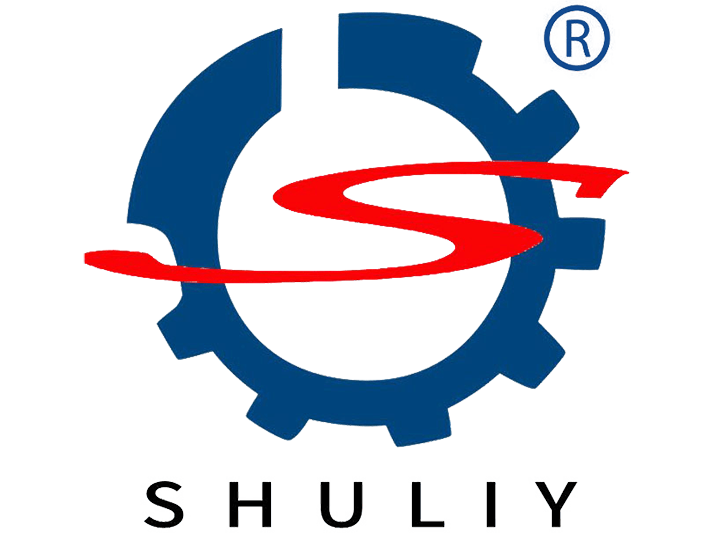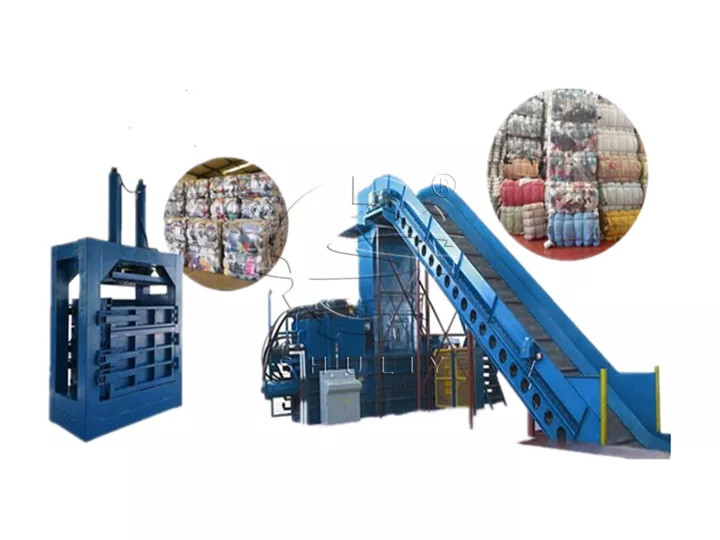Waste clothing balers are powerful machines whose main task is to tightly pack discarded clothing, textiles, and fiber materials into compact packages. This not only helps to reduce bulk and save space for storage and transportation but also effectively reduces waste disposal costs.
Whether it’s waste clothing, bedding, footwear, or other fiber materials, balers get the job done quickly and efficiently. Waste clothing balers are not only used in waste recycling lines, but also for fiber recycling, production of recycled materials, charitable donations, and many other applications.
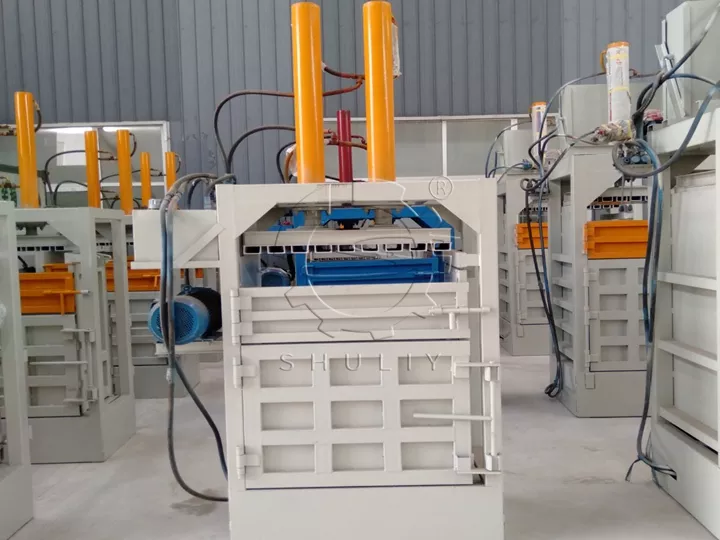
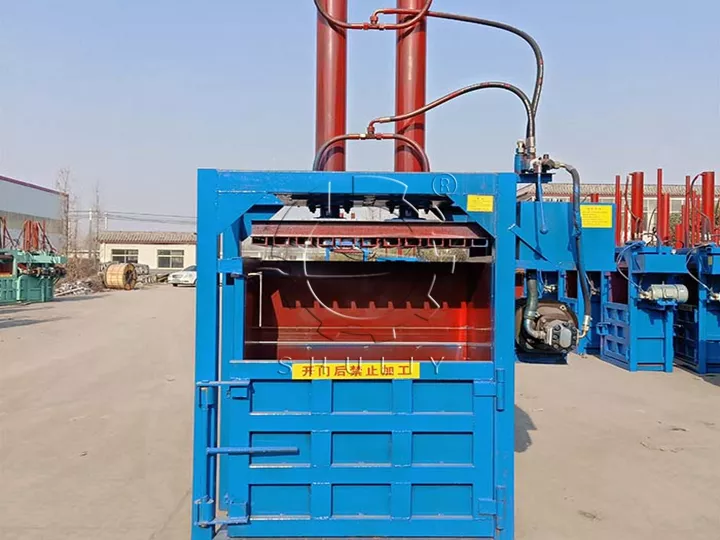
Clothing baler finished product show
The finished products of waste cloth balers are usually characterized by the following features: highly compact, solid and durable, easy to handle, convenient for storage and stacking, helpful for recycling and reuse, and so on.
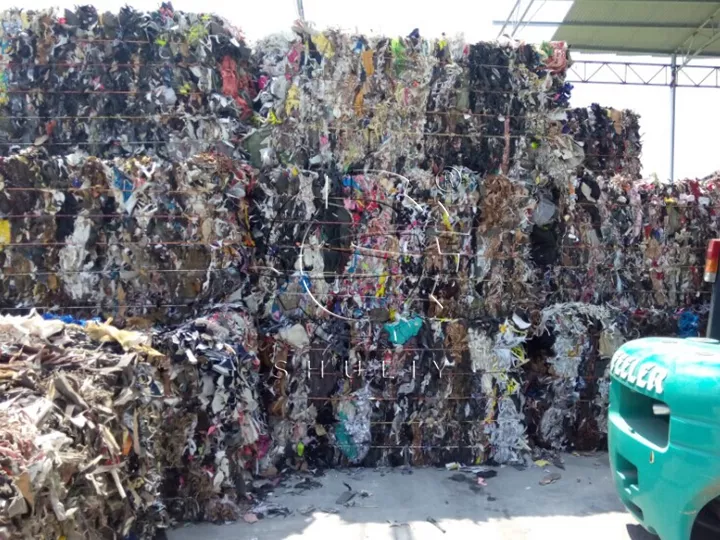
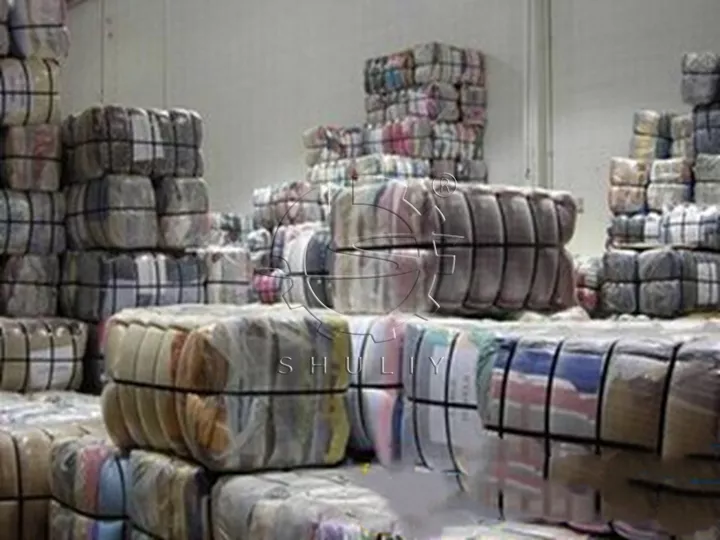
how the hydraulic cloth baler machine works?
The hydraulic system consisting of a hydraulic pump, a hydraulic cylinder, and a hydraulic oil pipeline is the core of the baler. Through the reciprocating motion of the hydraulic cylinder, the pressing plate compresses the old clothes into a compact bale. When the compression reaches the preset pressure or volume, the machine will automatically stop compressing.
Wide range of uses for balers
Yes, clothing balers have a wide range of uses in various fields, not only for waste clothing recycling. Here are some common applications of balers in other fields:
- Waste Paper and Waste Cardboard Recycling: Balers are used to tightly pack waste paper and waste cardboard into square or rectangular packages for transportation and recycled material processing. For this, you can learn more from the article Hydraulic Cardboard Baler For Waste Recycling.
- Plastic Recycling: Plastic balers are used for baling waste plastic containers, bottles, and plastic films, which helps to reduce the size and improve recycling efficiency.
- Agriculture: Balers are commonly used to pack agricultural products (e.g., grass, straw, corn stalks) into large square or round parcels for easy storage and transportation.
- Textile Industry: In addition to used clothing bales, balers can also be used to bale fresh textiles, towels, and bedding for easy distribution and sale.
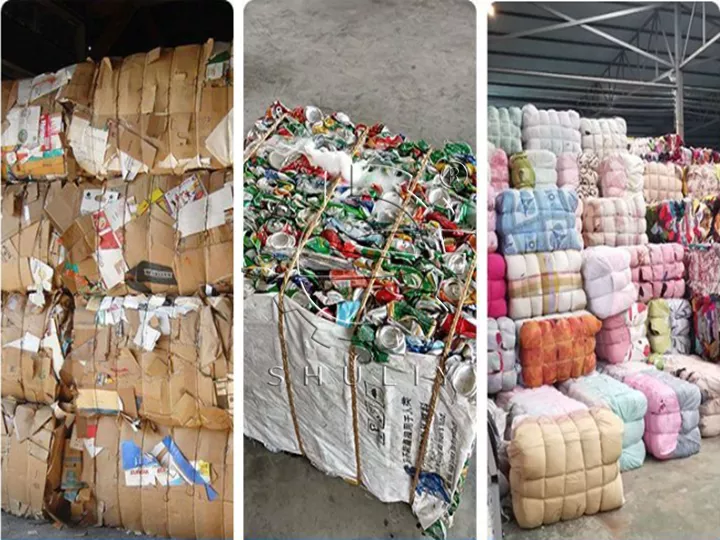
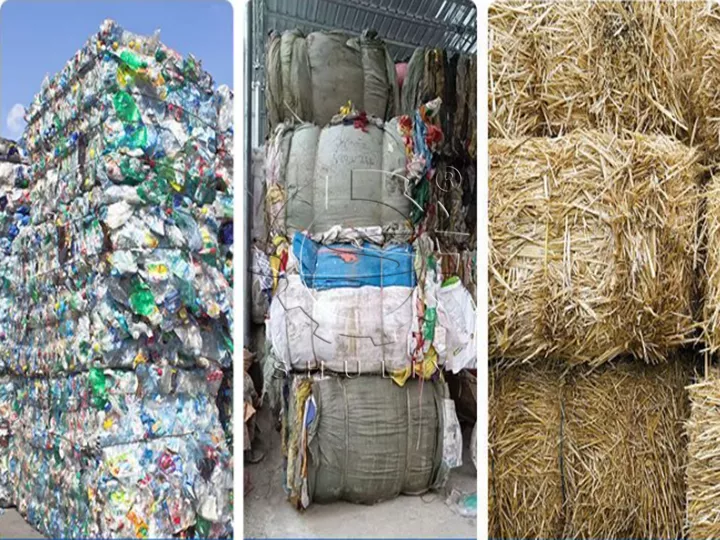
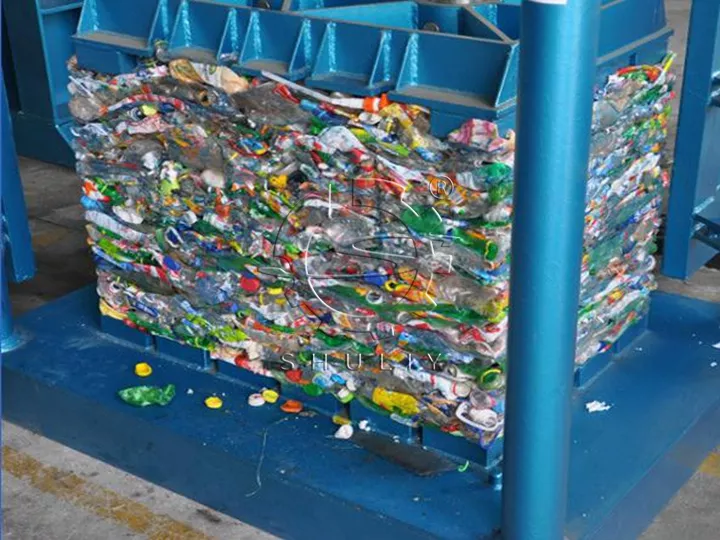
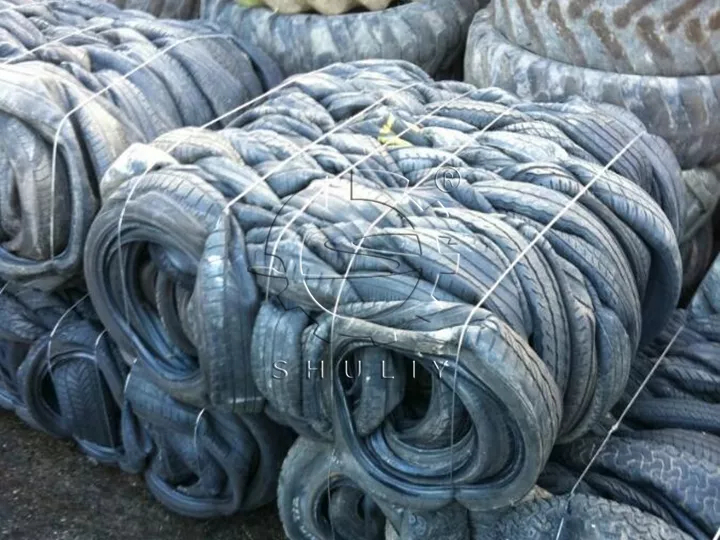
Overall, balers play an important role in a variety of industries where they help to increase efficiency, reduce costs, minimize size, ensure product quality, and promote sustainability and environmentally friendly practices.
main features of hydraulic cloth baling machine
- Efficient and quick: Clothes balers can quickly and efficiently pack used clothing or textiles into compact parcels. This increases productivity and reduces labor costs.
- Compact packing: The clothing baling machines can pack clothes tightly and evenly, ensuring that the parcels are secure. This helps to reduce the size of packages, reducing transportation and storage costs.
- Versatile applicability: Clothes balers can usually be applied to all types of waste clothes, textiles, and fiber materials, including waste clothes, bedding, towels, fabrics, etc.
- Environmentally friendly and energy efficient: Most clothing balers are designed to be energy efficient and environmentally friendly, contributing to sustainable development and eco-friendly practices by minimizing resource waste and energy consumption to reduce environmental impact.
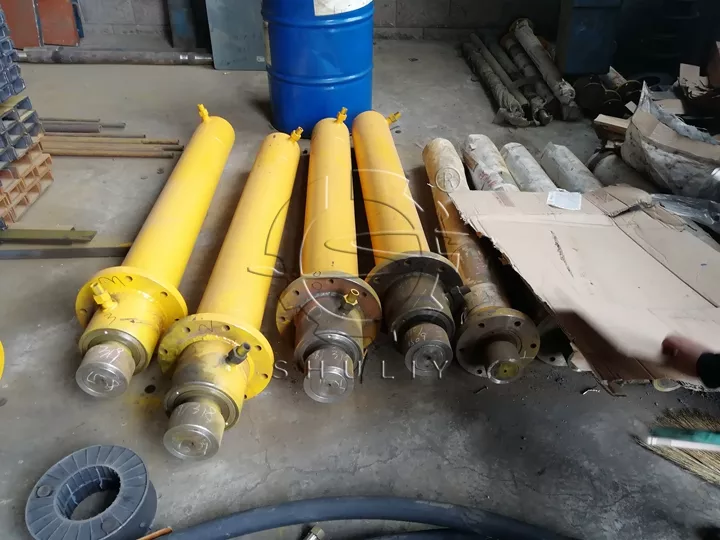
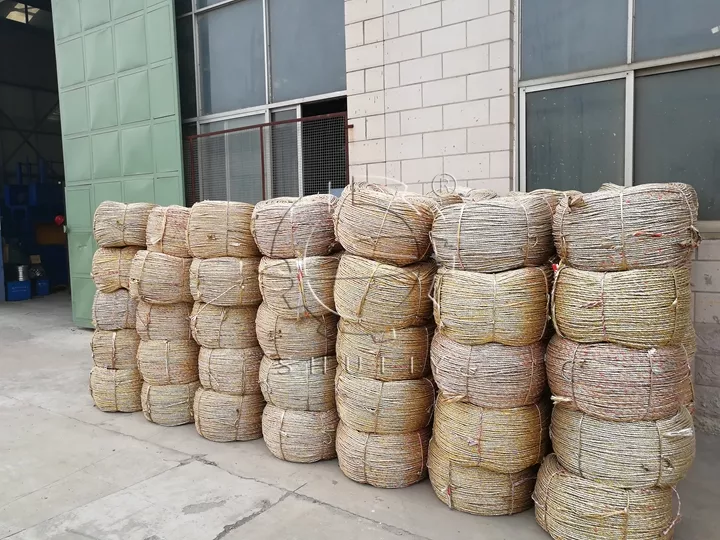
different models of baler machines
Determine the appropriate model and size based on the amount of waste you process and the scale of production. Different baler models have different processing capacities and technical parameters, listed below:
| Model | SL-40T | SL-60T | SL-80T | SL-100T |
| Hydraulic power(T) | 40 | 60 | 80 | 100 |
| Baled size(L*W*H)(mm) | 720*720*300-1600 | 850*750*300-2000 | 1100*800*300-2100 | 1000*1000*300-2100 |
| Capacity(t/h) | 1-3 | 2-4 | 4-7 | 8-10 |
| Power(kw) | 18-22 | 22-30 | 30-45 | 45-60 |
| Feed opening size(L*H)(mm) | 1000*720 | 1200*750 | 1500*800 | 1800*1000 |
| Weight(T) | 8 | 10 | 13 | 8 |
successful cases of clothing baler machines
As global environmental protection awareness increases, more countries also begin to strengthen waste management and recycling. Our balers have been shipped to the United States, India, Brazil, Germany, Japan, South Korea, Indonesia, Vietnam, Mexico, and so on.
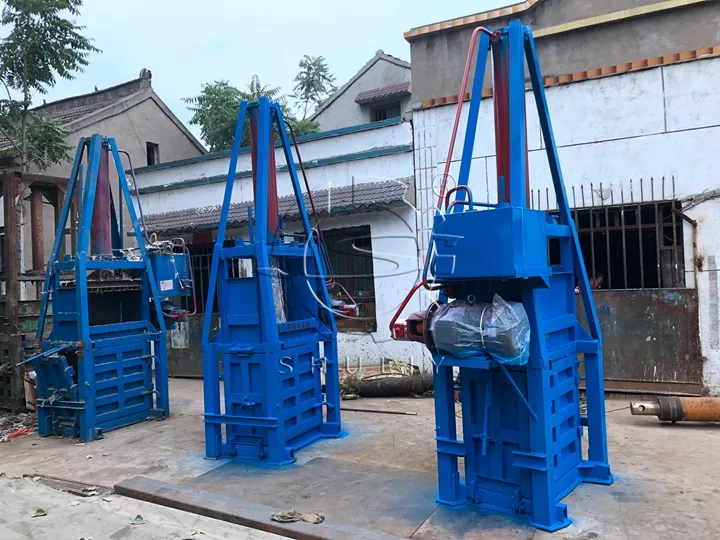
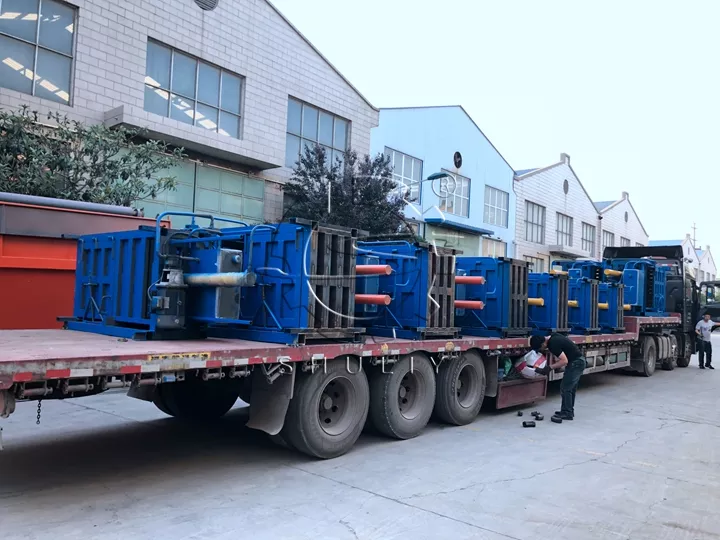
FAQ about hydraulic baler
There are some common questions that foreign customers may ask when purchasing a waste clothing baler, here are some main questions and the corresponding answers:
What are its power requirements?
Balers usually require a power supply and we will provide details of the power requirements based on the local voltage for the equipment specification.
Are training and installation services available?
Yes, we typically offer equipment installation and operational training services to ensure that our customers can utilize the equipment properly.
Can you provide technical specifications and parameters of the equipment?
Sure, we will provide detailed technical specifications and parameters of the equipment to help you understand the performance of the equipment.
Can we customize the equipment according to the customer’s demand?
Yes, we can usually customize the equipment to meet specific customer needs for different applications.
What are the transportation and installation costs for the equipment?
Transportation and installation costs typically vary depending on the equipment model, destination, and other factors. We will provide cost estimates accordingly and consult with you on the best solution.
These questions typically cover customer concerns when purchasing a waste clothing baler, and providing detailed answers will help you make an informed purchasing decision. Our company also sells advanced metal compaction system machines. If you need anything, please feel free to contact us!
